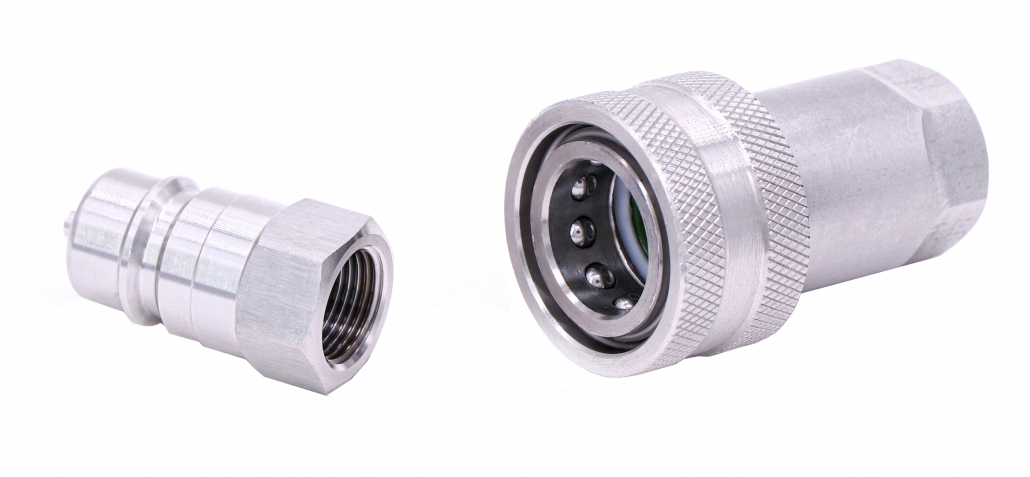SHD Series
Material: Carbon Steel
Standard: ISO 7241-A
Occlusion: Poppet
Locking System: Pulling Back the Sleeve
Threads: BSP
On Request Threads: NPT, Metric
Standard Seals: NBR
Optional Seals:NBR, FKM, EPDM, More
Working Temperature Range:
NBR: From -10 ̊C to +100 ̊C
Connection under Pressure: Not Allowed
Disconnection under Pressure: Not Allowed
Locking System: Pulling Back The Sleeve
General Features
SHD SERIES couplings are used for quick coupling and uncoupling of hydraulic lines. Hydraulic quick coupling with dust caps and dust plugs are used in many agricultural, and industry fields.
Applications:
Hydraulic Presses, Hydraulic High Pressure Pumps and Cylinders, Construction, Production, Aviation, and Mobile Hydraulic.
Quick Release Coupling Application
Quick-acting couplings provide a fast, convenient way to repeatedly connect, and disconnect fluid lines.
All quick-acting couplings have some elements in common. All have two parts: A plug and a socket. The plug is the male half and the socket is the female half. When connected properly, these parts seal and lock the joint effectively to contain internal pressures, and resist any tensile forces that tend to pull the joint apart. The parts are easily disconnected without tools by disengaging a locking mechanism and separating parts.
Most quick disconnects are designed using ball bearings (poppet valves) as a connection and valving mechanism. This makes them ideal for use within more rugged and robust applications such as mobile equipment, agriculture and remote hydraulics. Other applications include pneumatic, medical, construction, food processing, transportation, and medical industries. Quick Couplings are utilized in fuel systems, cooling, test rigs, air tools, and irrigation. They work well in confined spaces and the connection sits inline with the hose, and pipe works.
Which Quick Release Coupling Do You Need?
In order to select the right quick coupling, you must consider the following factors:
- Pressure
- Flow requirements
- The temperature of your media
- Functional and environmental considerations




